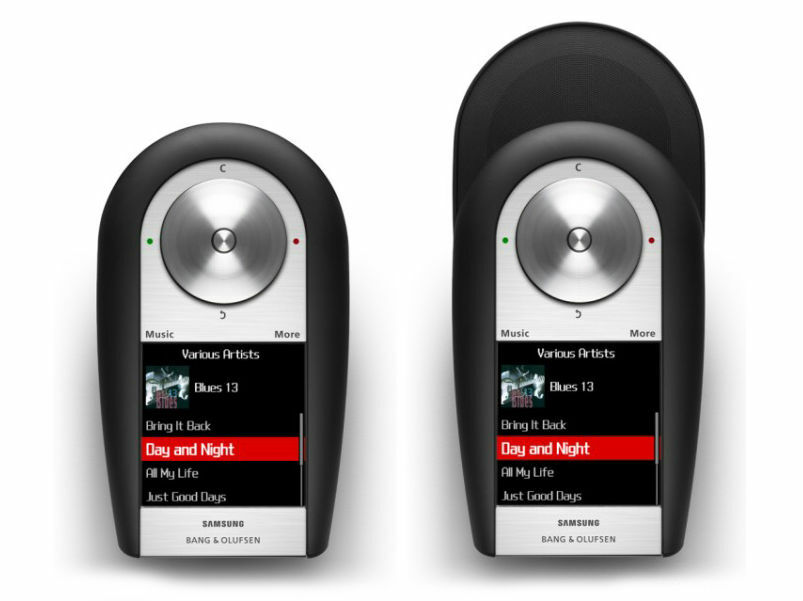When form doesn’t follow function: 15 of the ugliest phones that ever existed
With faces like these, not even their mothers could love them
We’ve come a long way since the big hulking phones of old. Extendable antenna’s kicked the bucket, screens got injected with glorious colour, and unwieldy keypads were obliterated.
The end results after years of experimentation and design filtration, are handsets like the sleek and sexy iPhone 5s and HTC One.
But it took a lot of mistakes to get there.
Some phones were beaten with ugly sticks. Others were born with genetic mutations. And a select few were summoned in circles of fire, entering this earth to the haunting rhythm of arcane chanting.
Prepare to claw your eyes out.
Serene (2005)

Produced as a joint venture between Bang and Olufsen and Samsung, this clamshell phone packed a paltry 0.3MP camera inconveniently located on a side hinge, 31MB storage, and a battery compartment only accessible by using a special screwdriver. Talk about sticking your middle finger up to convenience, eh?
Serenata (2007)

Those guys obviously didn’t learn their lesson and followed up the Serene with the Serenata – a cross between a jukebox and a tombstone. Touted as a music player with minimal phone capabilities, it seems ironic that this looks like where music goes to die. When using the stylish rotary wheel as a control pad, your hand always ends up obscuring part of the screen located below. We’re only human, not robots made of right angles.
Æ+Y (2011)

A jeweller-designed handset? Prepare for something ostentatious and completely impractical. At €7250 for the steel and €42,000 for the gold version, we’ll leave you to figure out how many gold iPhones you can buy with the same amount of money.
…
We could’t help ourselves: 11 or 64, 16GB Wi-Fi iPhone 5s’, respectively. Ouch.
Toshiba G450 (2008)

With its teeny tiny screen, this 3G-enabled phone was better off as a modem. Unless you preferred only reading three words of an email at any one time. The keypad split into two circles (because, well, it can), and it failed every ergonomics and usability test known to man.
Motorola Flipout (2010)

Essentially a 2.8in screen that flipped out to reveal a full QWERTY keyboard, the Flipout also had a 3.1MP camera onboard and ran on Android 2.1. Talk about some ancent numbers. Unfortunately for Motorola, no one quite flipped out over its design. Compromising on the size of the screen to fit the keyboard didn’t quite make sense, especially when the former was touch-enabled.
F88 Wrist Phone (2006)

Manufactured by Chinese corporation CEC, this device ambitiously crammed a 3MP 180-degree rotating camera, speakerphone and even pre-installed World Cup games into 100g of wrist phone – a precursor to the modern day smartwatch. Considering its size and overall ungainliness, you’d be better off strapping a smartphone to your wrist and calling it a day.
Samsung Z130 (2006)

More gimmicky than practical, the rotating screen on the Z130 was designed to apparently make video calls easier. It really didn’t make that much of a difference though, thanks to its tiny screen. It was fun to play around with though, we suppose.
Elfoid (2011)

This Japanese-made phone aimed to make the mobile communication experience a lot more human – literally. If its form doesn’t creep you out already, the Elfoid had you speaking into its belly while the caller’s voice emenated from its face. We hear the final version will mirror the caller’s movements via facial recognition software to become a writhing thing of evil clad in real skin. Shudder.
Kyocera/Sprint Echo (2011)

While others were busy making humanoid phones, Kyocera was busy making a nice big-screen device. And then destroyed the whole viewing experience by running a seam through its middle. While it makes for a more compact device, the only way the view isn’t wrecked is when the two screens are operating independently of each other. Still, good for multitasking, which is worth something.
Lamborghini T700 (2012)

Available in five colours, each of which had 650 units produced, the US$2750 Lamborghini T700 was the result of a collaboration between Prada, Ferrari, and Lamborghini. Clad in diamond-cut metal, sapphire glass and… crocodile skin, it was aimed at people with expensive (but clearly poor) taste.
Siemens Xelibri 6 (2003)

Released as part of Siemens’ fashion range, the Xelibri 6 was half phone, half powder case. Clearly targeted at the female market, it allowed users to check their reflections in not one, but two mirrors, in between checking their messages. Way to stereotype women, Siemens.
Nokia 7380 (2005)

Released as part of Nokia’s L’Amour collection, this lipstick-sized phone killed productivity with its controls. Or rather, its lack of them. Given how small and lousy its screen was at all of 208×104 pixels, you were better off making calls with a Mars bar. Slowly and painfully use its circular spinner to dial numbers and type messages one character at a time? Welcome to tech hell.
Vertu Signature Bucheron Cobra

The Signature Bucheron Cobra was only available in a limited quantity of 8 for US$310,000 each. There’s also a Python version available which ran a higher order of 26 units at US$115,000 each. Not that you’d be able to tell the two apart, mind. Both serpents looked like they’ve been glued on by a factory line of preschool children too. Not the cleverest of investments, we think you’ll agree.
Nokia 7600 (2003)

Aimed at the fashion market, the unusual and impractical teardrop shape of the 7600 led to the keys being relegated to two columns on either side of the screen. We’re all for creativity but not if it requires us to mentally re-calibrate our brains for under-the-desk texting. Thanks, but no thanks.
GoldVish Le Million (2006)

This over-the-top phone set the bar as the most expensive phone ever at €1M. We’re not sure what else to say.
So we’ll just curl up and cry instead.



